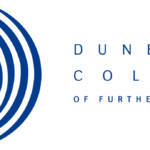If the art in your home consists of classic posters like the naked man holding the baby or the chimp on the toilet, then perhaps it’s time for a change. So why not revamp your walls with some original works of art.
Don’t worry if your efforts at painting in school weren’t destined for the notice board. An adult painting class is a totally different experience (your nearest neighbour won’t feel the urge to put green in your hair, for example) and keeping clean won’t be the only skill you will learn. On a practical level, your teacher should impart the basics of using line, colour, texture, light and space, while at the same time encourage your creativity and help you with your composition skills. Constructive criticism will also play an important part of your course.
One of the most important decisions you can make when you start painting is what medium to use – the main paint types are oils, acrylics and watercolours. (You could take a course that deals with all three but most people prefer to concentrate on one at a time, to perfect the correct technique. )
Oil paints are the choice for those who like to take their time, as they dry slowly, allowing you plenty of time to work and blend colours. However, this does also mean that you may have to wait for a number of months before your painting is ready to be varnished. Oils are good for producing texture in paintings – they are thick enough to be applied with a palette knife, yet they can also be diluted with white spirit to produce a wash. Acrylics share this texture-producing characteristic, and are used to produce similar effects. However, acrylics dry very quickly, so mistakes are not easily rectified.
Anyone who has ever been off work should be familiar with Watercolour Challenge, the Channel 4 programme that pits amateur painters against each other in a battle to the death for a set of sable brushes and a subscription to Art Monthly. If you have always thought that you could win the day, then watercolours should be your obvious choice. Although often perceived as insipid, intensity of colour can be achieved by the application of a series of washes. The cheapest of the three, watercolours can be lifted off the paper by re-wetting and, if paint squeezed from a tube has dried, it becomes reusable if you add water.
One of the best things about doing a painting course is that you will get to practice, which is one of the most crucial elements of improving your technique. As well as this, you will realise that making mistakes is all part of the learning process. For example, if your first family portrait makes your mother look like Winston Churchill, coax her away from the razor blades by telling her how much she has helped you improve your technique



















